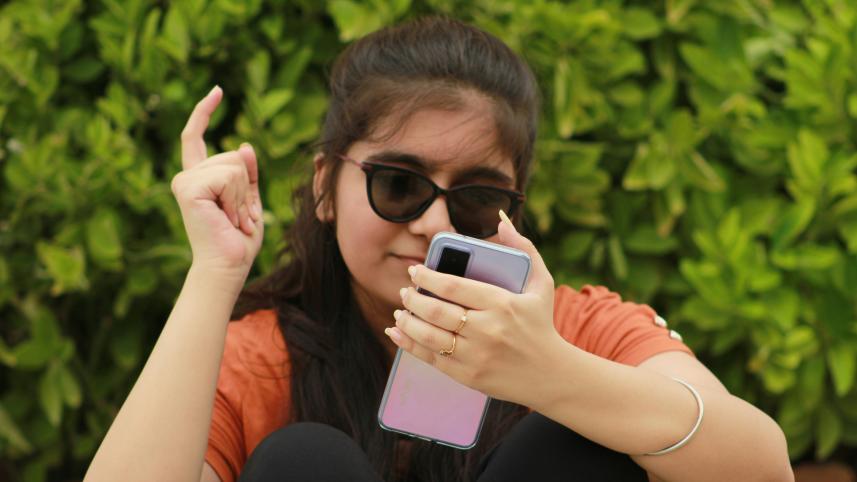The digital playground: safeguarding teens where they are

In today's hyper-connected world, social media platforms such as TikTok, Instagram, Facebook are more than entertainment hubs—they have become the dominant social playgrounds for teenagers. For many young people, particularly in countries like Bangladesh where digital access is rapidly expanding, these platforms are the spaces where friendships are forged, identities explored, and ideas shared. But as teens migrate more of their social lives online, the question of safety becomes not just relevant, but urgent.
Bangladesh has seen a remarkable increase in youth internet use in recent years. According to a study by the Asia Foundation, 64% of Bangladeshi teens access the internet several times a day, and 14% are online almost constantly. With over 50 million active internet users under the age of 25, the digital population in Bangladesh is increasingly youthful. While this surge offers new opportunities for learning, expression, and connection, it has also exposed young people to significant risks. A UNICEF poll revealed that 45% of Bangladeshi youth had experienced cyberbullying. A separate study conducted by the Bangladesh Medical University found that 59% of internet-using children in rural areas had suffered some form of online abuse.
Social media platforms have recognised these risks and begun to implement features aimed at protecting young users. TikTok, one of the most popular apps among Bangladeshi teens, has introduced its Family Pairing feature, allowing parents to link their accounts with their children's. This enables them to manage screen time, restrict inappropriate content, and limit direct messaging. The feature has recently been expanded to allow guardians to review their teen's followers, view blocked accounts, and customise privacy settings in greater detail. These tools are designed not to invade privacy but to foster open dialogue between parents and teens about healthy digital habits.
Other social media platforms have also taken steps to safeguard teenage users. For example, Instagram includes features that filter out potentially harmful content, offers reminders to take breaks from scrolling, and restricts interactions based on age. Parental supervision tools are being rolled out globally, enabling caregivers to monitor time spent on the app and manage who can interact with their teens online.
But platform-level protections alone are insufficient. The responsibility for creating safer digital environments is shared. Young users themselves must be equipped with the knowledge and confidence to navigate risks. Digital literacy education is essential—not only for teenagers but also for their parents and teachers. In Bangladesh, youth-led initiatives are emerging to address this gap, with campaigns focused on promoting responsible online behaviour, identifying harmful content, and providing peer-to-peer support networks. These grassroots efforts, often supported by NGOs and community organisations, are instrumental in shifting attitudes toward internet safety from passive concern to active engagement.
Governments, too, must play a more robust role. While Bangladesh has introduced elements of the Digital Security Act, enforcement remains uneven, and awareness of legal protections among young users is limited. Clearer regulatory standards are needed, particularly around data protection, content moderation, and accountability for platforms operating in the country. Investment in infrastructure and training to support teachers and community leaders in delivering digital literacy should be a national priority.
It is also essential to acknowledge the cultural and social nuances of safeguarding in a country like Bangladesh. Open conversations between parents and children about online experiences remain rare. In many homes, digital access is monitored, but discussions about mental health, privacy, and cyberbullying are still considered taboo. Changing this dynamic requires community-level engagement, led by educators, religious leaders, and local influencers who can bridge generational gaps and build trust around digital issues.
What emerges clearly is that the safety of teens in digital spaces cannot be left to tech companies alone, nor can it be enforced solely through law. It requires a collaborative, multi-stakeholder approach that respects young people's autonomy while protecting them from harm. Digital platforms must continue to innovate with transparency and responsibility. Parents must be present, informed, and empathetic. Governments must legislate and educate. And communities must foster cultures of openness and resilience.
As the digital playground becomes ever more central to teenage life, safeguarding must evolve from a protective reflex to a proactive strategy—one that empowers teens to thrive, not merely survive, online.
Parents and educators must be part of the conversation, not as gatekeepers but as guides. This includes fostering open dialogues about online experiences and recognising that banning platforms often pushes use underground, where it is less safe.
Teenagers will not leave the internet. Nor should they. Instead, society must catch up and treat these digital environments with the same seriousness as we do physical ones. We protect public parks and schools not by forbidding their use but by investing in their safety. The digital playground deserves no less.
Nadia Jahan is a digital activist, development worker and a communications professional working in a local non-governmental organisation.
The opinions expressed in this article are the author's own and do not necessarily reflect the editorial stance of the newspaper.



 For all latest news, follow The Daily Star's Google News channel.
For all latest news, follow The Daily Star's Google News channel.
Comments